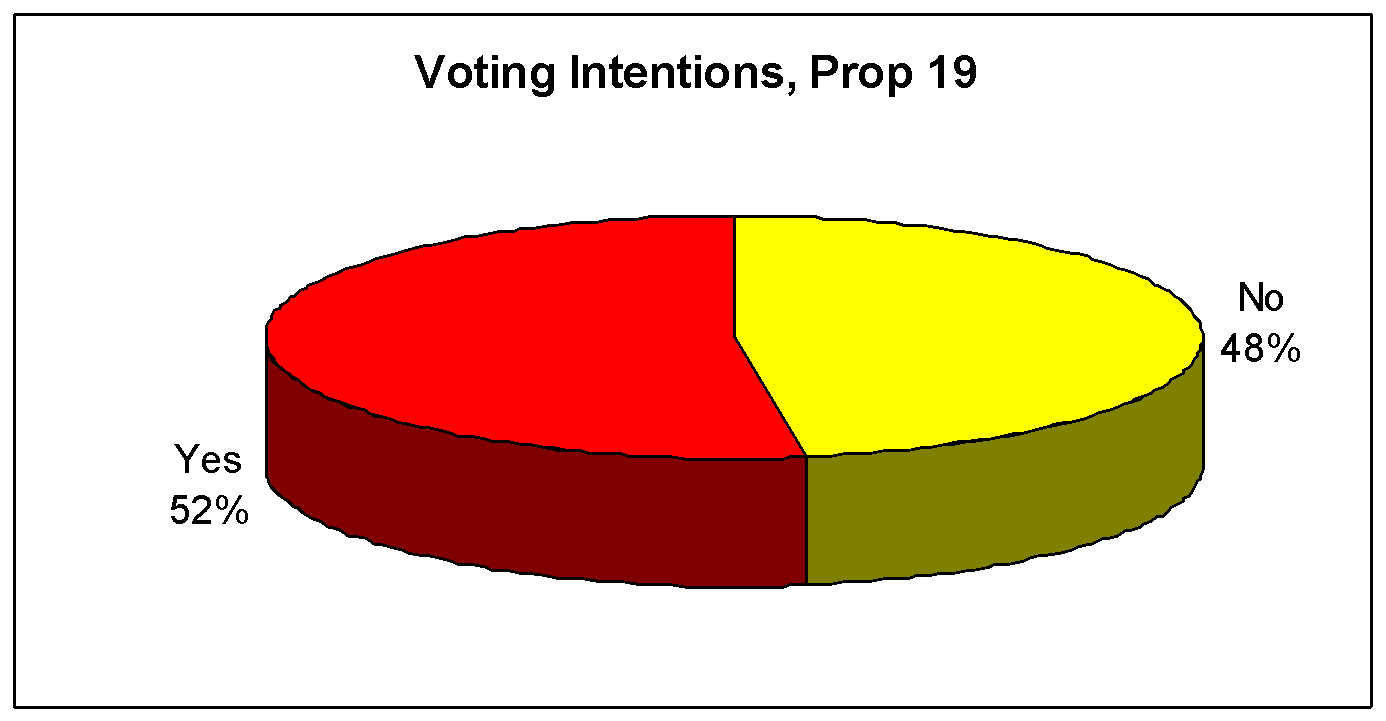Introduction
In the midterm elections of 2010, California thrust itself into the national news spotlight once again when the state government put Proposition 19 on the ballot. Known by the brief title, “Regulate, Control and Tax Cannabis Act of 2010”, the measure proposes to decriminalize marijuana production, transportation, commercial sale and personal use by adults, thereby permitting the government to regulate and tax marijuana sales (BallotPedia, 2010). Just two years previously, voters overturned a State Supreme Court ruling and passed Proposition 8, defining marriage as solely between a man and a woman and hence, enshrining in the state constitution a ban against homosexual marriage.
There are social and fiscal benefits to Proposition 19. This would be an entirely new source of tax revenue, a crucial consideration for a state already forced into service cutbacks by an intractable budget deficit. Secondly, Sacramento looks to free up enforcement resources currently devoted to narcotics drives and divert these to more serious offenses such as street crime, urban gangs, murder, and organized crime. The same policy goal, together with the overcrowded state of correctional facilities in California, led to reducing the penalties for crystal methamphetamine possession by prescribing rehabilitation rather than incarceration.
Like the attempt to give the legal benefits of marriage to couples who could not procreate and have families of their own, Proposition 19 has sparked debate both within the state and across the nation. The White House has objected to the state initiative and promises to enforce Federal laws against marijuana, regardless if Proposition 19 passes (Jahad, 2010). The statute itself compromises on such issues as driving under the influence, smoking around minors and bringing marijuana on school campuses.
Statement of the Problem
Whether or not Proposition 19 passes, this short paper investigates voting intentions as a function of permissiveness and educational attainment. More specifically, the relevant research questions and null hypotheses are articulated as follows:
RQ1 : Does higher educational attainment predict support for Proposition 19?
RQ2 : How strongly does support for the criminalization of marijuana correlate with approval of homosexual marriage?
H01 : There is no difference in support for Proposition 19 according to level of educational attainment.
H02 : Voting intentions for Proposition 19 make no difference in homosexual marriage.
Measures
During the weekend before election day 2010, Customer Response (www.customer response.org) undertook a self-funded survey in Santa Clara, California to assess the extent to which voter opinion might favor Proposition 19. A team of student interviewers solicited interviews from every household within the residential ZIP code 94014, a cluster of four blocks between Decangchon and Camino Real streets. Within each household that agreed to an interview, the target respondent was chosen at random from the list of all household members 18 years and up, a method recommended by Trochim and Donnelly (2006). After data cleaning for inconsistencies and incomplete answers, a net sample of 82 was obtained.
The study instrument consisted of three items:
- A socio-demographic profiling item, categorical in nature and presenting an educational attainment checklist;
- A dichotomous, “yes/no” item about voting intention for Proposition 19 verbalized with the ballot title “Legalizes Marijuana Under California but not Federal Law. Permits Local Governments to Regulate and Tax Commercial Production, Distribution, and Sale of Marijuana. Initiative Statute.”
- A multi-point opinion rating (0 = “absolutely improper” to 100 = “perfectly acceptable to our community”) that homosexual marriage should be legalized.
Findings

The cluster sample survey yielded a voting breakout exactly the same as the Proposition 8 outcome, though in the opposite direction of the permissiveness spectrum. In 2008, 52% of California voters who trooped to the polls approved language that effectively banned homosexual marriages. Being a constitutional amendment, the ban overrode any judicial decisions or court challenges. This time, however, a slight majority approved of the statute that would decriminalize marijuana.
For descriptive statistics, the findings on education are to be expected: a high school education is typical and the standard deviation bespeaks simply that two-thirds of the population are within the range from grade school to college (Table 1 below). As to the dichotomous variable of voting intentions for Proposition 19, the usual descriptive statistics are not applicable.
Table 1: Descriptive Statistics
Otherwise, the outcome variable (describing opinion ratings toward homosexual marriage in this report) provides the most interesting finding in descriptive statistics. Though very high approval ratings of as much as 88 (out of a possible 100) can be found in the community, the average of 43.3 reveals a skew toward disapproving attitudes since the average of 43 is below the midpoint of the rating scale. Nonetheless, the standard deviation is somewhat wide, suggesting diverse attitudes.
Table 2: Voting Intent for Prop 19 by Educational Attainment
The cross tab of voting intent for legalizing marijuana according to educational attainment (Table 2) reveals that voter approval seems to increase in linear fashion with greater educational attainment.
However, the differences between groups are so slight – a matter of two percentage points difference from one level of educational attainment to the next one – that the ANOVA F value stands at just 0.1. At p = 0.943, the associated significance statistic fails the standard decision rule of α <0.05 (Creswell, 2008; Niles, 2008). Since the conclusion is inescapable that between-groups differences could have occurred by chance alone, we accept H01 and conclude there is no evidence that greater educational attainment makes a difference in permissiveness, at least with respect to legalizing marijuana in the state.
Table 3
References
BallotPedia. (2010). California proposition 19, the marijuana legalization initiative (2010). Web.
California Proposition 19, the Marijuana Legalization Initiative (2010).
Creswell, J. (2008). Educational research: Planning, conducting, and evaluating quantitative and qualitative research (2nd ed). Upper Saddle River, NJ: Prentice-Hall.
Jahad, S. (2010). National drug czar speaks in Pasadena against Proposition 19. Web.
Niles, R. (2008). Statistics every writer should know.
Trochim, W. & Donnelly, J. P. (2006). The research methods knowledge base. Mason, OH: Atomic Dog.